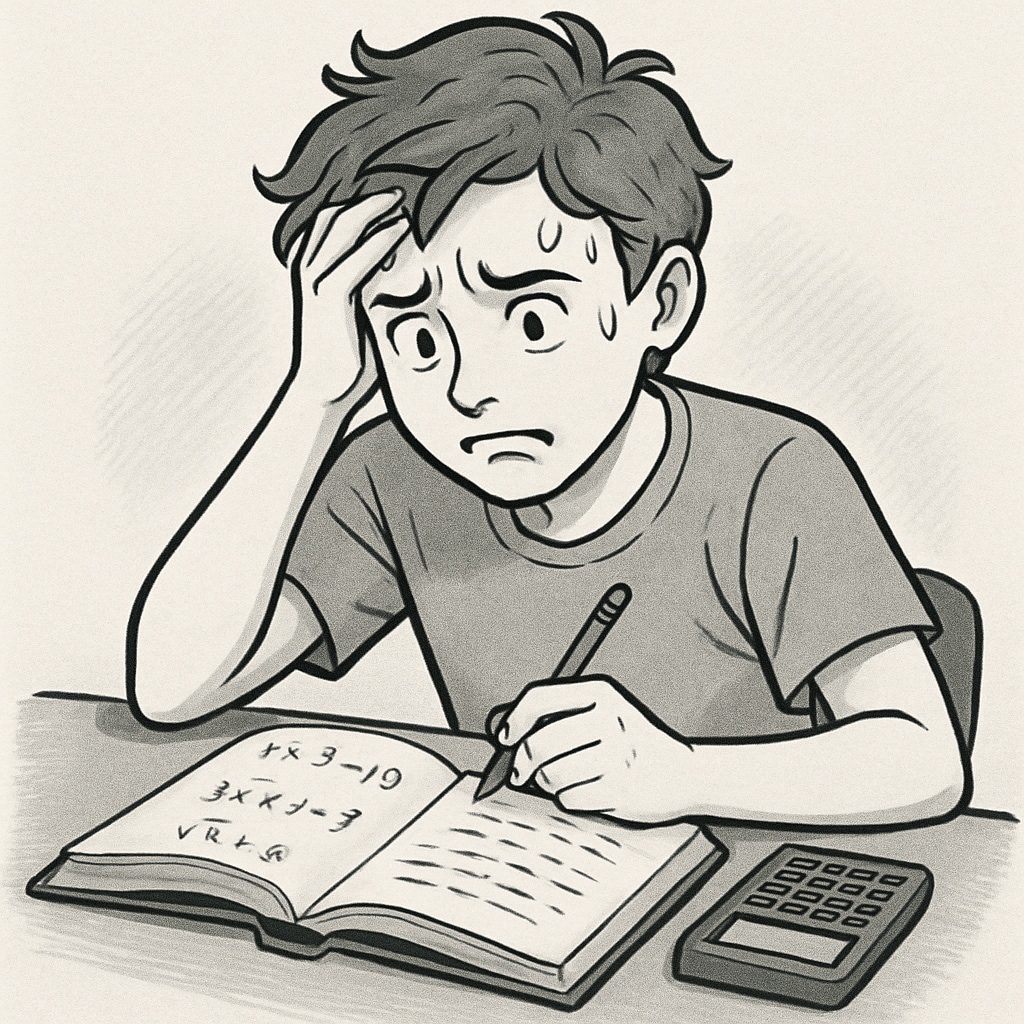Math anxiety, multiple-choice questions, and exam stress often create a perfect storm that can overwhelm even the most diligent students. For high school learners, these obstacles can feel insurmountable, particularly when the pressure to succeed is compounded by time constraints and the fear of making mistakes. This article examines the psychological roots of math anxiety and provides actionable strategies to help students regain control and confidence during critical exams.

Understanding the Psychological Impact of Math Anxiety
Math anxiety is not just a fleeting discomfort; it is a deeply rooted psychological response that can impair cognitive function. Studies show that anxiety activates the brain’s amygdala, which is responsible for processing fear, while simultaneously reducing activity in areas associated with logical reasoning and problem-solving (Amygdala on Britannica). As a result, students often struggle to focus, recall key formulas, or approach problems systematically.
Multiple-choice questions, in particular, exacerbate this challenge. The fear of selecting the wrong answer—combined with the pressure to identify multiple correct options—can lead to second-guessing and self-doubt. For example, a 17-year-old transfer student recently shared how her inability to manage this stress resulted in poor performance, despite excelling in math assignments.
Strategies to Rebuild Confidence and Tackle Multiple-Choice Questions
Fortunately, math anxiety can be managed with intentional strategies. Here are several methods to help students navigate multiple-choice sections with greater clarity:
- Practice Mindfulness: Breathing exercises and mindfulness techniques can reduce anxiety before and during exams. For instance, taking slow, deep breaths helps calm the nervous system and refocus attention.
- Break Down Questions: Divide complex multiple-choice questions into smaller parts. Analyze each option independently to avoid feeling overwhelmed by the choices.
- Use the Process of Elimination: Start by eliminating clearly incorrect answers. Narrowing down the options reduces confusion and increases the likelihood of identifying the correct solutions.
- Reframe Mistakes: View mistakes as learning opportunities rather than failures. This shifts the focus from fear to growth, fostering resilience.
The Role of Cognitive Restructuring
Cognitive restructuring is a psychological technique that involves replacing negative thought patterns with constructive ones. Students experiencing math anxiety often harbor self-defeating beliefs, such as “I’m just bad at math” or “I will fail no matter what.” These thoughts can be challenged and reframed using evidence-based reasoning.
For example, consider a student who struggles with multiple-choice questions. Instead of focusing on past failures, they can remind themselves of their preparation and problem-solving abilities. This mental shift builds self-efficacy, which is critical for overcoming exam-related stress (Self-efficacy on Wikipedia).

Long-Term Solutions for Managing Exam Stress
While short-term techniques are helpful, addressing math anxiety requires a holistic approach. Here are some long-term strategies:
- Regular Practice: Consistent exposure to challenging math problems reduces fear and builds familiarity over time.
- Seek Support: Teachers, tutors, and counselors can provide personalized guidance and encouragement.
- Adopt a Growth Mindset: Embrace the idea that abilities can improve with effort and persistence.
- Prioritize Sleep and Nutrition: A well-rested brain functions more effectively under pressure.
By implementing these practices, students can gradually transform their relationship with math from one of fear to confidence, ultimately improving their academic performance and overall well-being.
Readability guidance: This article uses short paragraphs, clear subheadings, and actionable strategies to ensure ease of understanding. Transitions like “however,” “for example,” and “as a result” are used to maintain flow and coherence.


